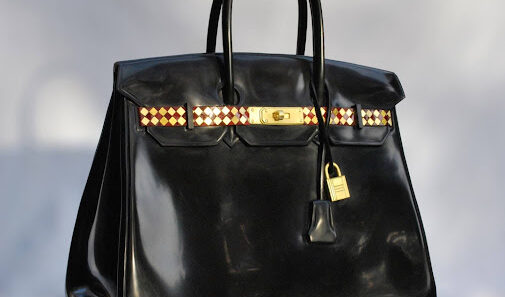SINGLE COLOUR NOT ENTITLED TO TRADEMARK PROTECTION
FACTS
- The plaintiff company, Christian Louboutin SAS, pleaded that it was the owner of the registered trademarks “RED SOLE” under registration numbers 1922048, 2341890 and 2341891. The mark was a shade of the colour red applied to the soles of ladies’ footwear manufactured by the plaintiff.
The suit was initiated by the plaintiff as the defendants were using a shade of colour red on the soles of their ladies’ footwear, thereby allegedly infringing the registered trademarks of the plaintiff and passing off their goods as that of the plaintiff. The plaintiff also prayed for a decree against the defendants and a grant of Rs.1,00,00,000/- as damages for loss of sales, reputation and goodwill of the plaintiff’s trademarks caused by the unauthorized activities of the defendants.
CONTENTIONS OF THE PLAINTIFF
The plaintiff contended that it held exclusive ownership over the registered trademarks “RED SOLE”, which is not a word-mark, rather a shade of the colour red applied to the soles of ladies’ footwear manufactured by the plaintiff.
Defendant number 1 & 2 were using the “RED SOLE” manufactured by them without the permission or authorization from the plaintiff. Thus, the defendants infringed the plaintiff’s registered rights, and were therefore liable to be injuncted, and pay damages.
When the matter was listed for admission and issue of summons to the defendants, the Court was of the view that no legal cause of action was made out as per the averments of the plaint. Hence, the plaint was liable to be rejected, and the court was not inclined to issue a notice to the defendants.
However, the plaintiff placed reliance on the judgment of the Division Bench in the case of Bright Enterprise Pvt. Ltd. & Anr. v. MJ Bizcraft LLP & Anr.,[1] and pleaded that a commercial suit cannot be dismissed at the preliminary stage by the court without issuing notice to the defendant.
In terms of Section 165 of the Commercial Courts, Commercial Division and Commercial Appellate Division of High Courts Act, 2015 the CPC, 1908 has been amended in so far as it applies to a commercial dispute of a specified value. Accordingly, Order XIII-A has been inserted. Order XIII-A deals with summary judgment. Rule 2 of the abovementioned act provides that an applicant may apply for summary judgment at any time after service of summons on the defendant but before issues are framed in the suit. Rule 4 of the same deals with the procedure therefore and provides for giving at least 30 days’ notice to the respondent who has a right to file a reply. Therefore, in view of the above, it was submitted that the suit cannot be dismissed at the admission stage without issue of notice to the defendant.
The plaintiff further relied upon Sections 31 and 32 of the Act[2] to argue that distinctiveness can be achieved by use of the trademark even if distinctiveness did not exist at the time of registration, and if distinctiveness is acquired for the trademark because of its use in relation to the goods for which the trademark is registered, then such a trademark cannot be declared as invalid.
The plaintiff also claimed the RED SOLE to be a device mark. The plaintiff also argued that under Section 10(2) of the Trade Marks Act, a single colour would also qualify as a trademark.
DECISION BY THE SINGLE JUDGE – Justice Valmiki J. Mehta
The Court observed that the judgment of Bright Enterprise Pvt. Ltd. & Anr. v. MJ Bizcraft LLP & Anr was not applicable in the present situation as the court in that case was dealing with Order XIII-A11 of Civil Procedure Code and not Order XII Rule 6.[3] Since there was no legal cause of action, the present suit lacked merit and was not maintainable.
Further, the court also noted that there was no legal cause of action as there was no valid trademark. After a reading of Section 2(m) and Section 2(zb), a trademark means a mark including “combination of colours”. Thus, “combination of colours” is a sine qua non, and hence a single colour would not fall within the definition of a mark and cannot be claimed as a trademark.
The court further held that by simply applying a single colour to the sole of a footwear it would not result in the single-coloured sole as a device, as Section 10(2) has to be read in light of Section 10(1) which uses the expression “combination of colours”.
The judgment is extensively based upon the mandate of the supervening provision of Section 30 (2)(a) of the Act which contains the limitations of the effect of a registered trademark and held that a single colour applied to the goods would in normal circumstances pertain to the characteristic of the goods which is a feature of the product and hence a non-trademark function and thus, cannot be prevented from being used by other sellers in the market for their goods, even though the same is registered. Thus, in such circumstances, there would be no infringement.
Lastly, for passing off, it was held that no question of any deception and confusion arose as the defendants were selling their goods under word mark ‘VERONICA’ which was completely different from the plaintiff’s word mark ‘CHRISTIAN LOUBOUTIN’. Accordingly, the suit was dismissed for want of legal cause of action
[1] Bright Enterprise Pvt. Ltd. & Anr. v MJ Bizcraft LLP & Anr., 2016 SCC OnLine 4421.
[2] The Trademarks Act, (1999).
[3] Order XII, Rule 6, Civil Procedure Code, (1908).
Author: Muskan Mahajan
 Legal Content Writer at Legal Desire Media & Insights
Legal Content Writer at Legal Desire Media & Insights
















